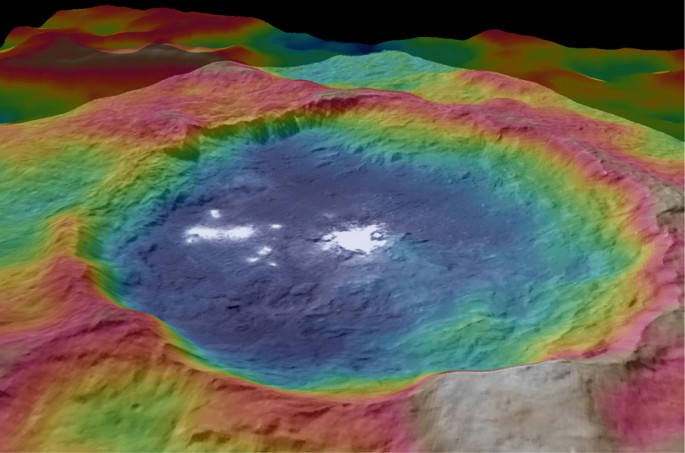The queen of the asteroid belt, Ceres, was first invaded by NASA's Dawn spacecraft in 2015. Ceres was considered to be a hard and boring ice-space rock at that time, however, now it seems that it might be much more different.
NASA's Dawn spacecraft mission has now unveiled a totally new and complex side of Ceres. The dwarf planet was initially thought to have a rocky topping and a core covered by water-ice. But the new data from the spacecraft, published recently in the journal Nature Geoscience, reveals that it could be more than just a simple combination of water-ice.
According to the scientists, the surface and the core of the dwarf planet is not as hard and icy as previously thought. That is, the subsurface of Ceres is not only a water-ice sandwich, but a complex mixture of a number of materials, including salts, ice, rock and other minerals.
In addition to misconception about the sandwich analogy, the researchers have also discovered that the bright spots on Ceres associated with the large Occator impact crater on its surface are highly reflective because of a number of salts. The complete details of the study are described in another paper published in the journal Nature.
The team of researchers working on the data derived from NASA's Dawn spacecraft further says that the accumulation of the minerals on Ceres did not take place because of the space rock that resulted in a crater. In fact, the minerals appeared on the surface of the crater later, probably because of a water-related process.
Ceres is full of impact craters, but they do not look like the way they should and this is evident from the ice-rick model of the dwarf planet. Because of the reason that water-ice can flow, the researchers initially expected the craters to be shallower.
However, old craters on Ceres were very deep and the largest ones reached as far as one mile into the surface of Ceres. This characteristic feature of the craters on the surface of Ceres makes it inconsistent to the pure ice subsurface composition.
This is the reason why the team decided to make models of Ceres's craters along with the viscous flow of the icy subsurface. The researchers found that Ceres' interior must not be having more than 30 to 40 percent water-ice by volume because then the flow of ice would be too easy and the topography must have been destroyed.
The team believes that there must be a number of low-density material and things in its interior than just the rock. In addition, there might be a huge number of salts on its surface.
The following video taoks about the mysterious bright spots on Ceres:



























